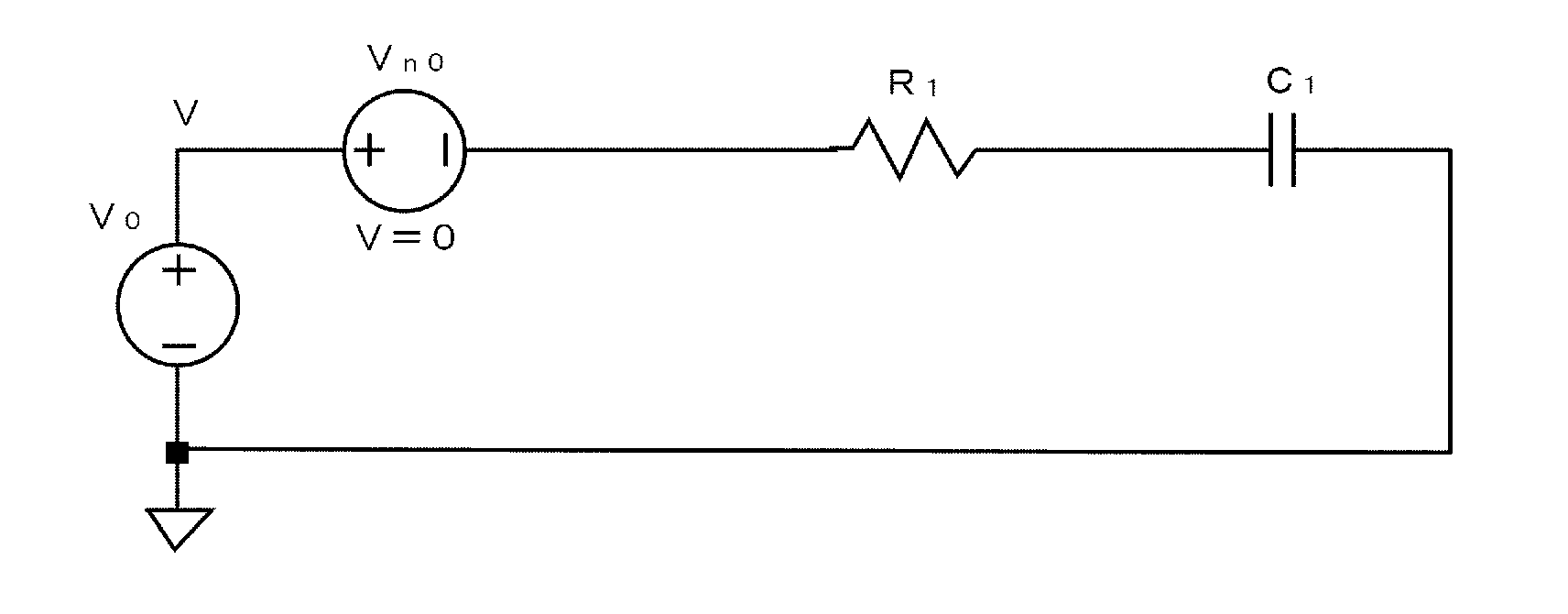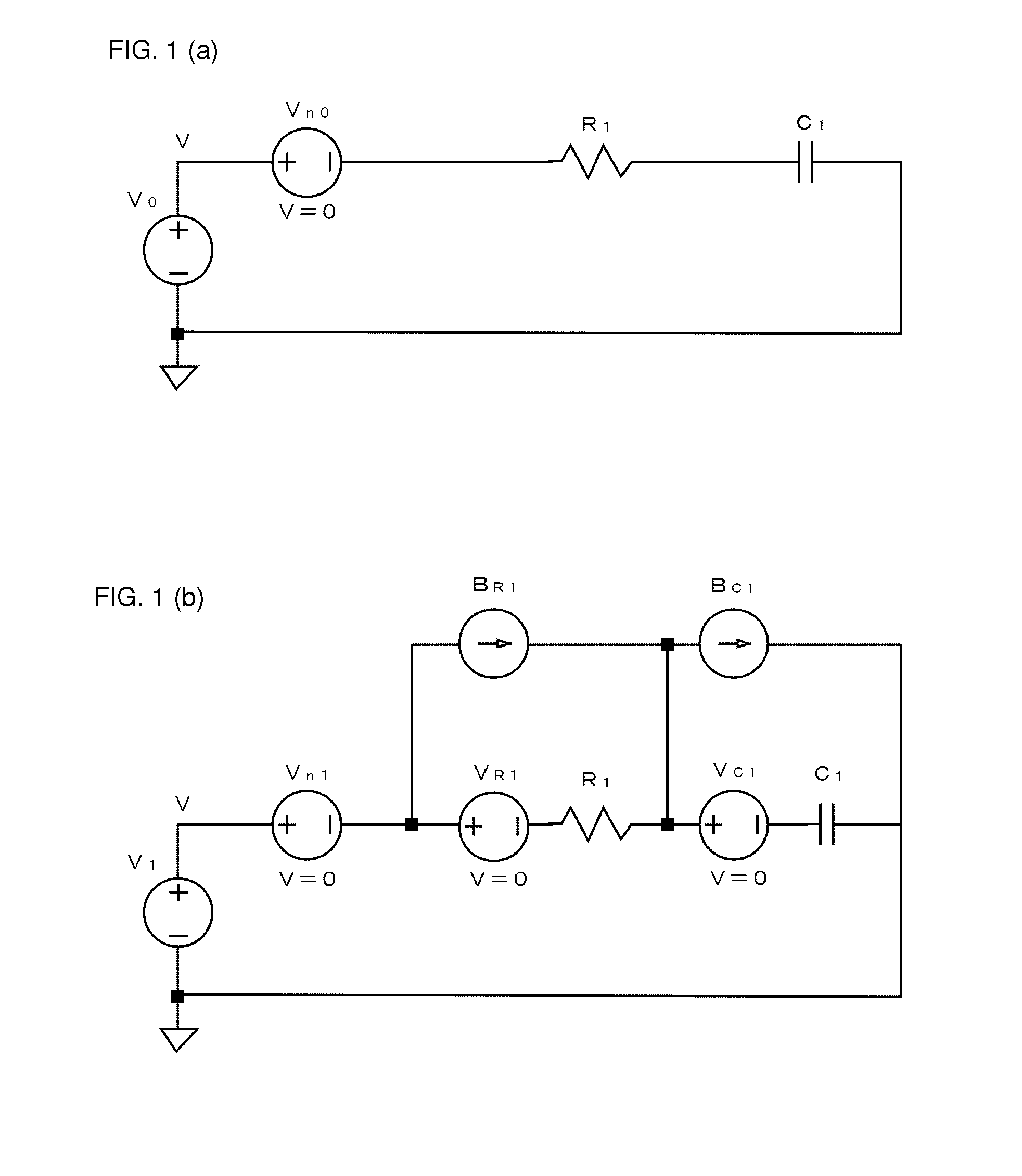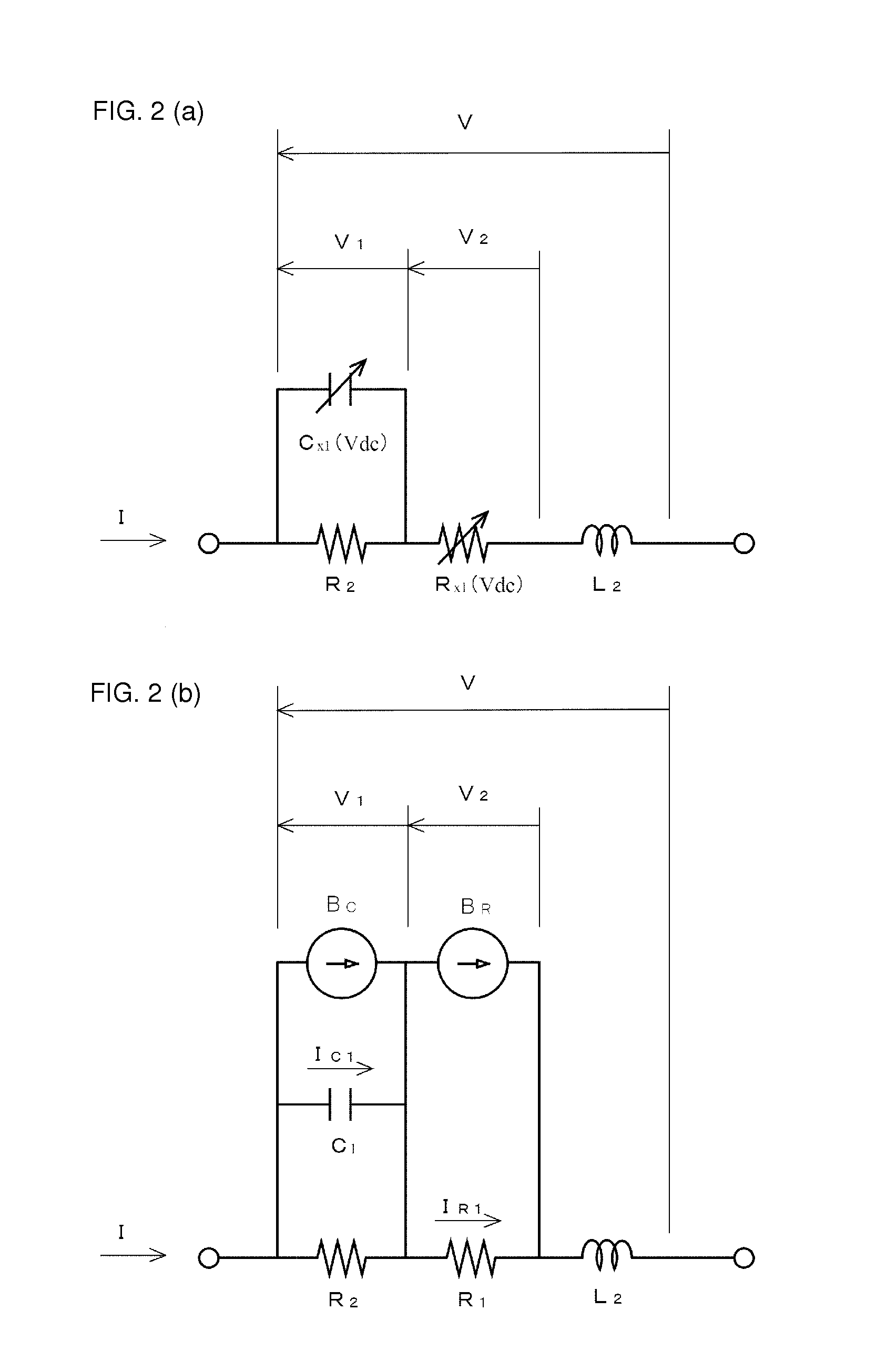Capacitor simulation method and capacitor nonlinear equivalent circuit model
a capacitor and simulation method technology, applied in the field of capacitor simulation methods and capacitor nonlinear equivalent circuit models, can solve the problem that the circuit model is not suited for circuit simulation, and achieve the effect of simple configuration and high precesion
- Summary
- Abstract
- Description
- Claims
- Application Information
AI Technical Summary
Benefits of technology
Problems solved by technology
Method used
Image
Examples
first embodiment
[0088]In the capacitor simulation method and capacitor nonlinear equivalent circuit model in the first embodiment, as described above, the characteristic change ratios kR1(Vdc) and kC1(Vdc) of the passive circuit elements R1 and C1 when the direct-current voltage Vdc is applied are expressed by the approximate function exp(f(x)) using the reference voltage Vref applied to the capacitor as the variable x on the basis of an actually measured value. Accordingly, the characteristic change ratios kR1(Vdc) and kC1(Vdc) expressed by Expressions (10) and (12) are calculated using the approximate function exp(f(x)) in accordance with the referred voltage Vref. The currents IR1(Vdc) and IC1(Vdc) when direct-current voltage is applied can be obtained by causing the difference currents ΔIR1(Vdc) and ΔIC1(Vdc) expressed by Expressions (9) and (11) to flow concurrently with the currents IR1 and IC1 flowing when no direct-current voltage is applied. Consequently, the difference currents ΔIR1(Vdc) ...
second embodiment
[0094]In the passive equivalent circuit model and nonlinear equivalent circuit model in the second embodiment, the series circuit of the resistive element R1 and the capacitive element C1 is connected in series to the parallel circuit of the capacitive element C2 and the resistive element R2, and they constitute a passive circuit element that represents a capacitor equivalent circuit being a target for simulation.
[0095]When the parallel circuit of the capacitive element C2 and the resistive element R2 is transformed into a nonlinear equivalent model, as illustrated in FIG. 5(a), the resistive element R2, whose circuit constant is independent of the direct-current voltage Vdc, is connected in parallel to the control current source BR handled as a behavior current source model, and the capacitive element C2, whose circuit constant is independent of the direct-current voltage Vdc, is connected in parallel to the control current source BC handled as a behavior current source model. Howe...
third embodiment
[0106]FIG. 9 is a circuit diagram that illustrates a nonlinear equivalent circuit model in the present disclosure by representing the nonlinear equivalent circuit model illustrated in FIG. 8(b) as a generalized format. In FIG. 9, the portions identical with or corresponding to those in FIG. 8(b) have the same reference numerals, and the description thereof is omitted.
[0107]In the capacitor simulation method using the general-format nonlinear equivalent circuit model illustrated in FIG. 9, first, the capacitor equivalent circuit is represented using passive circuit elements Rx, Lx, Cx, rx, lx, and cx, and the nonlinear equivalent circuit model illustrated in FIG. 9 is established. Here, the suffix x (x=1, 2, 3, . . . ) on each circuit element indicates the element position 1, 2, 3, . . . of the element numbered from the left to right in sequence in FIG. 9 when the position of the leftmost element in the drawing is defined as 1. Hereinafter, the suffix x is added to each circuit eleme...
PUM
 Login to View More
Login to View More Abstract
Description
Claims
Application Information
 Login to View More
Login to View More - R&D
- Intellectual Property
- Life Sciences
- Materials
- Tech Scout
- Unparalleled Data Quality
- Higher Quality Content
- 60% Fewer Hallucinations
Browse by: Latest US Patents, China's latest patents, Technical Efficacy Thesaurus, Application Domain, Technology Topic, Popular Technical Reports.
© 2025 PatSnap. All rights reserved.Legal|Privacy policy|Modern Slavery Act Transparency Statement|Sitemap|About US| Contact US: help@patsnap.com



